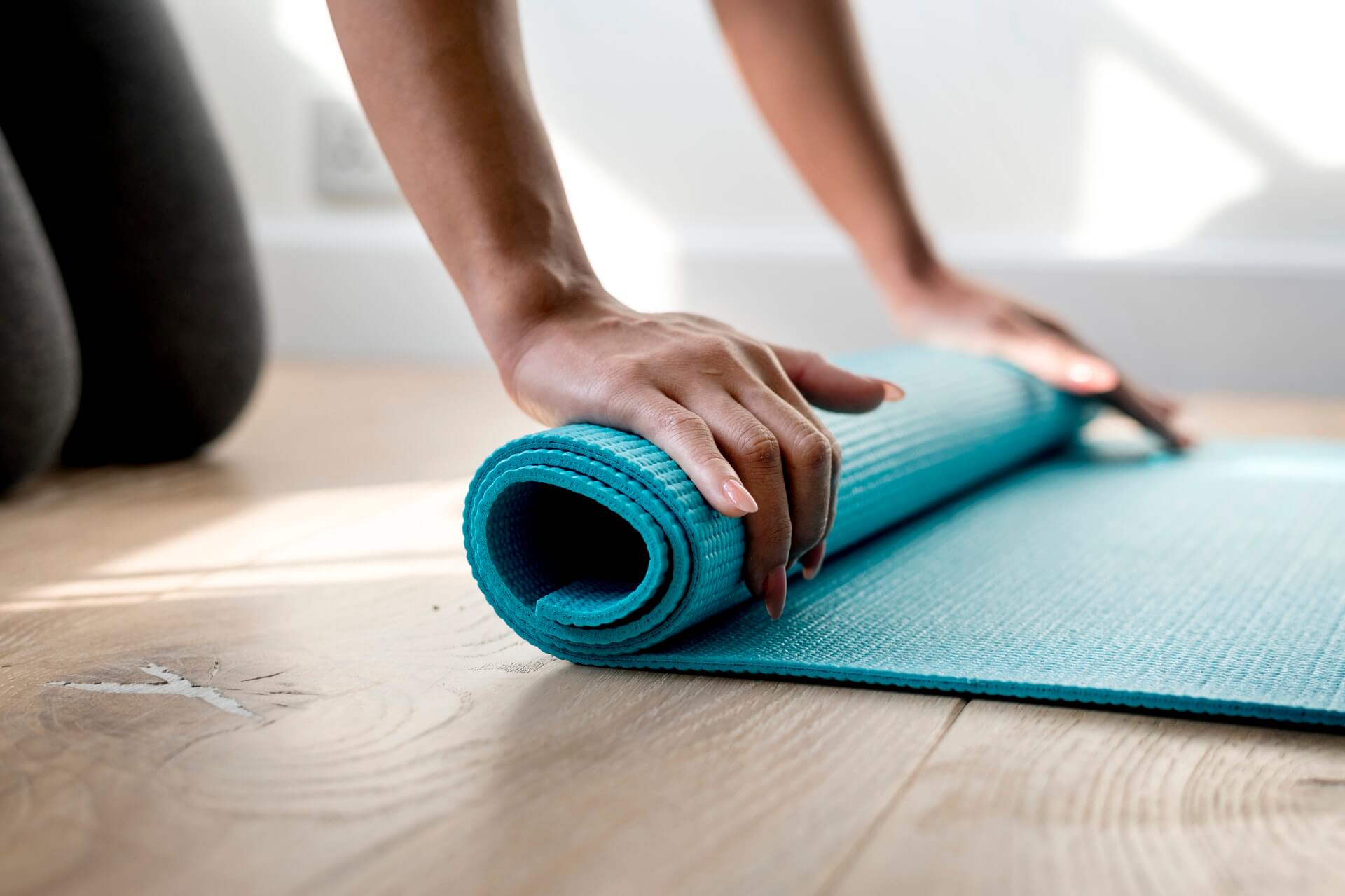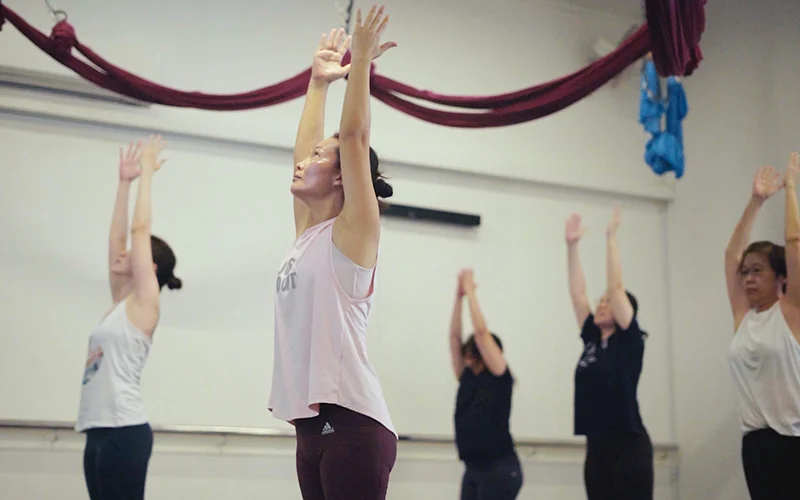Starting a hot yoga studio can be a rewarding venture. It offers both physical wellness and a calming atmosphere.
Opening a hot yoga studio involves more than just a love for yoga. It’s about creating a space where people can find peace and improve their health. You’ll need to plan your business, find the right location, and gather the necessary equipment.
You also need to consider marketing strategies to attract clients. This guide will walk you through the essential steps to start your own hot yoga studio. Whether you’re a yoga teacher or a business enthusiast, this journey can be fulfilling. Let’s explore how you can turn your passion into a thriving business.
Market Research

Starting a hot yoga studio requires thorough market research. Understanding your market ensures your business thrives. This section guides you through key steps in market research.
Identify Target Audience
Identifying your target audience is crucial. Start by considering who benefits most from hot yoga. Think about their age, gender, and fitness level.
- Age group: 20-40 years old
- Gender: Both males and females
- Fitness level: Beginners to advanced
Use surveys and online tools to gather more data. These tools help you understand their preferences and needs.
Analyze Competitors
Analyzing competitors gives you insight into the market. Look at other hot yoga studios in your area. Identify their strengths and weaknesses.
| Competitor | Strengths | Weaknesses |
|---|---|---|
| Studio A | Experienced instructors, prime location | High prices, limited class times |
| Studio B | Affordable classes, strong community | Small facility, less variety in classes |
Create a list of services your competitors offer. Determine what you can do better or differently.
- More flexible class schedules
- Competitive pricing
- Unique class offerings
Understanding your competitors helps you position your studio effectively. It also helps you find opportunities to stand out.
Business Plan
Starting a hot yoga studio requires a solid business plan. A well-thought-out plan will guide you through the process. It will also help secure funding and attract clients. Let’s break down the essential components of your business plan.
Define Business Goals
First, outline your business goals. What do you want to achieve with your hot yoga studio? Do you aim to create a community space? Or do you want to offer specialized yoga classes? Clearly defined goals will steer your decisions. They will also keep you focused on your mission.
Budget And Funding
Next, determine your budget and funding. How much money do you need to start? List all expenses, such as rent, equipment, and marketing. Then, explore funding options. Personal savings, loans, or investors can provide the necessary capital. A detailed budget will keep your finances in check.
Location Selection
Starting a hot yoga studio is an exciting journey. One of the most crucial steps is location selection. The right location can make or break your business. It affects your foot traffic, accessibility, and overall success. Let’s dive into the key considerations for choosing the perfect spot for your hot yoga studio.
Choosing The Right Area
Choosing the right area for your hot yoga studio involves several factors. First, consider the demographics. Look for areas with a high population of health-conscious individuals. These are often urban areas or affluent suburbs. Next, analyze the competition. It’s important to know how many yoga studios are already in the area. A little competition is healthy, but too much can be challenging.
Accessibility is another key factor. Ensure your studio is easy to reach by public transport. Also, consider parking availability. People prefer places with convenient parking options. Lastly, think about the neighborhood vibe. A vibrant, active area is ideal for attracting more clients. Look for places near gyms, cafes, and health food stores.
Lease Vs. Purchase
Deciding whether to lease or purchase your studio space is a major decision. Each option has its pros and cons. Let’s break it down:
| Lease | Purchase |
|---|---|
|
|
Leasing is often more affordable initially. It allows flexibility if you want to move later. You also have fewer maintenance responsibilities. On the other hand, purchasing is a good long-term investment. Property values can increase over time. You also have full control over your space. Consider your financial situation and long-term goals to make the best choice for your studio.
Studio Design
Designing your hot yoga studio is crucial for creating a welcoming environment. The right design can attract new members and keep them coming back. Let’s dive into the essential aspects of studio design.
Layout And Space Utilization
Maximize the available space in your studio. Ensure there is enough room for students to move comfortably. Arrange mats in a way that everyone has enough personal space. Consider the flow of movement in the studio. Create clear pathways for entering and exiting the room. Avoid clutter and keep the design simple. This will make the space feel open and inviting.
Heating And Ventilation
Hot yoga requires a consistent temperature. Invest in a reliable heating system. Ensure it can maintain the desired heat throughout classes. Proper ventilation is equally important. Install vents or fans to circulate fresh air. This helps control humidity and keeps the air breathable. Balance heat and ventilation to create a comfortable environment.

Legal Requirements
Starting a hot yoga studio involves several legal requirements. These ensure your business is compliant and safe for your clients. Understanding these requirements is crucial for a smooth and lawful operation. Here are the main legal aspects you need to consider.
Permits And Licenses
Every business needs specific permits and licenses to operate legally. A hot yoga studio is no different. You will need a business license from your local government. This license allows you to legally operate your studio in your city or town.
Additionally, you may need a zoning permit. This permit ensures your studio is in a location zoned for commercial use. Check with your local planning department to understand the zoning laws.
Another important permit is a fire department permit. This ensures your studio meets fire safety standards. The fire department will inspect your studio for compliance.
Health And Safety Regulations
Health and safety regulations are critical for a hot yoga studio. The high temperatures can pose risks if not managed properly. Here are some key areas to focus on:
- Ventilation: Ensure your studio has proper ventilation systems. This helps maintain air quality and regulate temperature.
- Cleanliness: Maintain a high level of cleanliness. Regularly clean mats, floors, and other surfaces to prevent the spread of germs.
- Emergency Procedures: Have clear emergency procedures in place. Train your staff on these procedures to ensure quick and effective responses.
Adhering to these regulations protects your clients and staff. It also helps you avoid legal issues and potential fines.
Hiring Staff
Hiring the right staff is crucial for the success of your hot yoga studio. Quality staff members ensure that your clients have a positive experience and keep coming back. Here’s how to find the best instructors, trainers, and support staff.
Instructors And Trainers
Qualified instructors and trainers are the backbone of your studio. Look for certified yoga teachers with experience in hot yoga. Ensure they have a passion for teaching and a strong understanding of yoga techniques.
Conduct thorough interviews to assess their skills and teaching style. Ask them to lead a class as part of the interview process. This helps you see how they interact with students. Consider their ability to create a welcoming environment for all skill levels.
Offer competitive pay and benefits to attract top talent. Provide opportunities for continuous education and professional development. This keeps your instructors motivated and up-to-date with the latest trends.
Support Staff
Support staff are essential for smooth operations. Hire friendly and organized receptionists to manage bookings and customer inquiries. They are the first point of contact for your clients.
Look for individuals with excellent communication skills. They should be able to handle administrative tasks efficiently. They should also be knowledgeable about your services and class schedules.
Consider hiring cleaning staff to maintain a clean and hygienic studio. A clean environment is crucial for health and safety, especially in hot yoga. Regular cleaning ensures your studio always looks its best.
Invest in staff training and team-building activities. This fosters a positive work environment and improves staff retention. Happy employees lead to happy clients.
Marketing Strategies
Opening a hot yoga studio is an exciting venture. With a good marketing strategy, your studio can attract many yoga enthusiasts. This section will guide you through effective marketing strategies to ensure your studio’s success.
Online Presence
Creating a strong online presence is crucial. It helps you reach a wider audience. Start by building a professional website. Ensure it is user-friendly and mobile-responsive.
Include important details such as:
- Class schedules
- Pricing
- Instructor bios
- Contact information
Utilize social media platforms like Facebook, Instagram, and Twitter. Share engaging content such as:
- Class updates
- Yoga tips
- Client testimonials
- Special promotions
Consider investing in online advertising. Platforms like Google Ads and Facebook Ads can help target potential clients in your area.
Local Advertising
Boost your studio’s visibility through local advertising. It helps attract nearby residents. Print flyers and brochures. Distribute them at local businesses, gyms, and community centers.
Partner with local wellness centers and health food stores. This can help cross-promote your services. Offer free trial classes or discounts to attract new clients.
Use local newspapers and magazines to advertise your studio. Write press releases about your studio’s opening and special events.
Consider hosting community events. Free workshops or open houses can draw people in. These events can introduce them to hot yoga and your studio.
Word-of-mouth is powerful. Encourage satisfied clients to refer friends and family. Offer referral incentives such as discounts or free classes.
| Strategy | Details |
|---|---|
| Online Presence | Website, Social Media, Online Ads |
| Local Advertising | Flyers, Partnerships, Community Events |
Customer Experience
The customer experience is the heart of your hot yoga studio. Happy clients will keep coming back and spread the word about your studio. From the moment they walk in, every detail matters. Here are some essential aspects to focus on.
Membership Packages
Offering various membership packages can cater to different needs. Some clients prefer monthly plans, while others opt for annual memberships. Consider including:
- Single class passes
- Monthly unlimited plans
- Annual memberships
- Student discounts
- New client introductory offers
Each package should provide clear benefits. For example, an annual membership might include free guest passes or discounts on merchandise. Transparency and value in your packages will attract and retain clients.
Client Retention
Client retention is crucial for long-term success. Keeping your clients engaged and satisfied ensures they remain loyal to your studio. Here are some strategies:
- Personalized communication: Send birthday messages or class reminders.
- Feedback loops: Regularly ask for client feedback and act on it.
- Community building: Host events or workshops to build a sense of community.
- Referral programs: Encourage clients to bring friends with special rewards.
- Exclusive content: Offer online classes or tutorials for members only.
By focusing on these areas, you create a welcoming and inclusive environment. This not only improves client retention but also fosters a thriving community.
Financial Management
Starting a hot yoga studio involves various challenges, and effective financial management is key to your success. Properly managing your finances ensures that you can sustain operations and grow your business. Below, we explore crucial aspects of financial management including expense tracking and revenue generation.
Expense Tracking
Tracking expenses is essential to keep your hot yoga studio afloat. Here are some tips:
- Use accounting software to record all transactions.
- Create a budget and stick to it.
- Keep receipts and invoices organized.
- Review expenses monthly to identify areas for cost-cutting.
Consider the following common expenses:
| Category | Estimated Cost |
|---|---|
| Rent | $2,000 – $5,000 per month |
| Utilities | $300 – $600 per month |
| Instructor Salaries | $2,500 – $5,000 per month |
| Insurance | $200 – $500 per month |
| Marketing | $500 – $1,500 per month |
Revenue Generation
Generating revenue is crucial for the sustainability of your hot yoga studio. Consider these strategies:
- Membership Plans: Offer monthly, quarterly, and yearly membership plans.
- Class Packages: Sell class packages at a discounted rate.
- Workshops: Host special workshops and charge a premium fee.
- Retail Sales: Sell yoga mats, apparel, and other accessories.
Promotional strategies to boost revenue:
- Offer a free first class to attract new clients.
- Provide referral discounts to existing members.
- Use social media to promote your studio and engage with the community.
By focusing on financial management, you can ensure the long-term success of your hot yoga studio. Implement these strategies to track expenses and generate revenue effectively.
Frequently Asked Questions
What Are The Benefits Of Hot Yoga?
Hot yoga improves flexibility, detoxifies the body, and boosts cardiovascular health. It can also reduce stress and enhance mental clarity.
How Much Space Is Needed For A Hot Yoga Studio?
A hot yoga studio typically requires at least 1,000 square feet. This allows enough room for students to practice comfortably.
What Equipment Is Essential For A Hot Yoga Studio?
Essential equipment includes yoga mats, heaters, humidifiers, mirrors, and sound systems. Proper ventilation and flooring are also important.
How Do You Market A Hot Yoga Studio?
Market your studio through social media, local advertisements, and partnerships. Offering promotions and hosting events can attract new clients.
Conclusion
Starting a hot yoga studio can be rewarding. Focus on location, design, and marketing. Train your staff well. Offer exceptional customer service. Engage with your community. Maintain a clean and safe environment. Stay updated with trends. Remember, passion and dedication drive success.
With careful planning, your studio can thrive. Embrace the journey and enjoy the process. Happy teaching!




